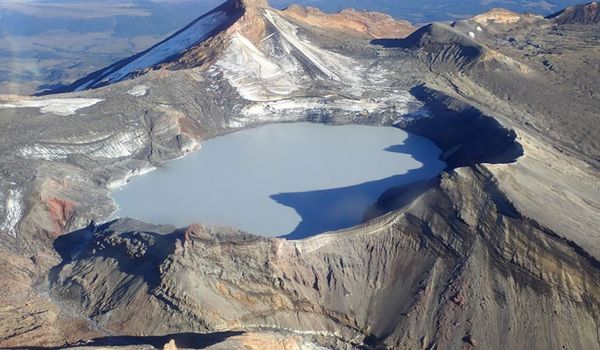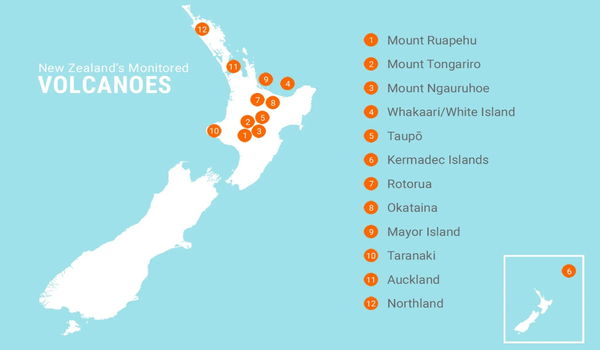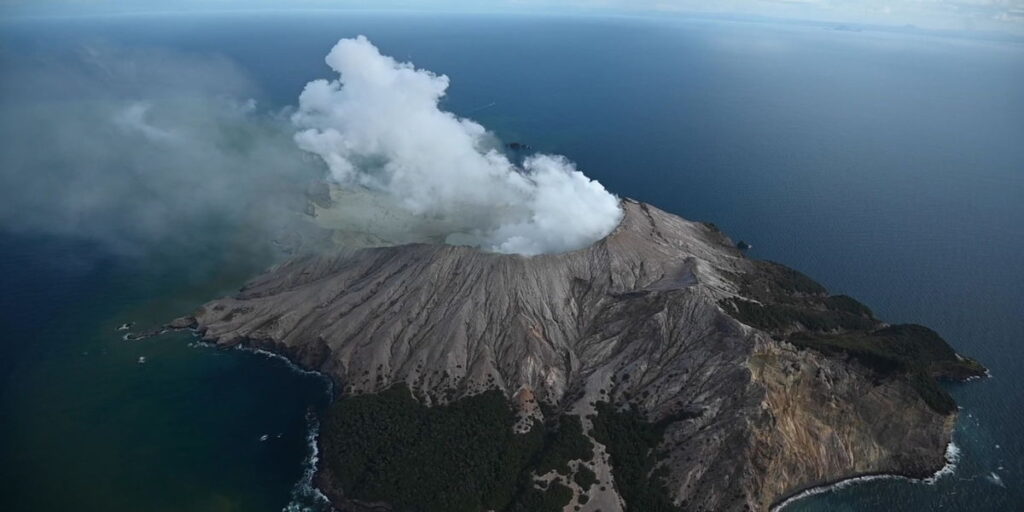✅ Last Update: Mar 16, 2025 @ 8:31 am
In New Zealand, volcanoes play a significant role, adding beauty and potential danger to the country’s environment.
- In this article, we’ll explore the world of New Zealand’s active volcanoes, aiming to answer the question and beyond it: How many volcanoes in New Zealand are active?
The short answer is 14, New Zealand has 12 active volcanoes as of March 2025.
1. New Zealand's Volcanic Landscape
New Zealand sits on the Pacific Ring of Fire, known for earthquakes and volcanic activity. This makes the country home to different types of volcanoes, each with its own features.
- The three main types are: stratovolcanoes, calderas, and volcanic fields.
2. North Island's Active Volcanoes:
New Zealand’s North Island has some of the most active volcanoes in the world. These volcanoes shape the land, create beautiful landscapes, and remind us of the Earth’s power.
1. Mount Ruapehu
Mount Ruapehu is the tallest volcano in the North Island. It has a crater lake that changes color and temperature, showing its activity. People ski on its slopes in winter and hike in summer. The last eruptions were in the early 2000s, proving it is still active.
2. Mount Tongariro
Mount Tongariro is known for the Tongariro Alpine Crossing, a popular hiking trail. The landscape has steaming vents, bright blue lakes, and rocky peaks. It last erupted in 2012, sending ash into the air and covering parts of the track.
3. Mount Ngauruhoe
Mount Ngauruhoe is a part of the Tongariro volcanic system. It has a perfect cone shape and was used as Mount Doom in The Lord of the Rings films. It last erupted in 1977 but is still considered active.
4. White Island (Whakaari)
White Island is off the Bay of Plenty coast and is New Zealand’s most active volcano. It constantly releases steam and gas. In 2019, a sudden eruption caused a tragic loss of life, showing how unpredictable volcanoes can be.
5. Taupō Volcano
Lake Taupō is actually a massive volcano. Around 1,800 years ago, it had one of the biggest eruptions in history. Today, the lake looks peaceful, but the area is still geologically active.
These volcanoes are a reminder that the North Island sits on a powerful and ever-changing landscape.

3. South Island's Active Volcanoes (offshore):
The South Island of New Zealand is not as volcanically active as the North Island, but it still has a few important volcanic areas that show the Earth’s power.
1. Solander Islands
The Solander Islands are small volcanic islands southwest of Fiordland. They are the peaks of an underwater volcano and are still considered active, though no eruptions have been recorded in modern history.
2. Banks Peninsula
Banks Peninsula, near Christchurch, was formed by ancient volcanic activity. While the volcanoes here are long extinct, the region still shows signs of past eruptions in its rugged landscape. There is no current activity, but it remains a key volcanic feature of the South Island.
Unlike the North Island, the South Island does not have fully active volcanoes today. However, scientists still monitor underground activity in areas like Fiordland, where geothermal energy and small earthquakes suggest the Earth is still shifting beneath the surface.

4. Monitoring and Mitigation
New Zealand has a monitoring system called GeoNet, run by GNS Science. It watches for seismic and volcanic activity all over the country.
This helps scientists and authorities give timely warnings and evacuation plans if there’s increased volcanic activity.

👨💻 FAQs about Active Volcanoes in New Zealand
The three main types of volcanoes in New Zealand are stratovolcanoes, calderas, and volcanic fields.
The active volcanoes are mostly found in the North Island, including areas like the Taupō Volcanic Zone, the Auckland Volcanic Field, and the Tongariro National Park. Offshore, you can find volcanoes in the Kermadec Islands and surrounding seafloor.
White Island (Whakaari) is the most active volcano in New Zealand. It constantly emits steam and gas and has had multiple eruptions, the most recent in 2019.
The most recent eruption occurred at White Island (Whakaari) in December 2019. The last eruption on Mount Ruapehu was in 2007.
Yes, active volcanoes can be dangerous. While many of the volcanoes are closely monitored, eruptions can still occur unexpectedly, as seen in 2019. The risk is managed through early warning systems and regular monitoring.








